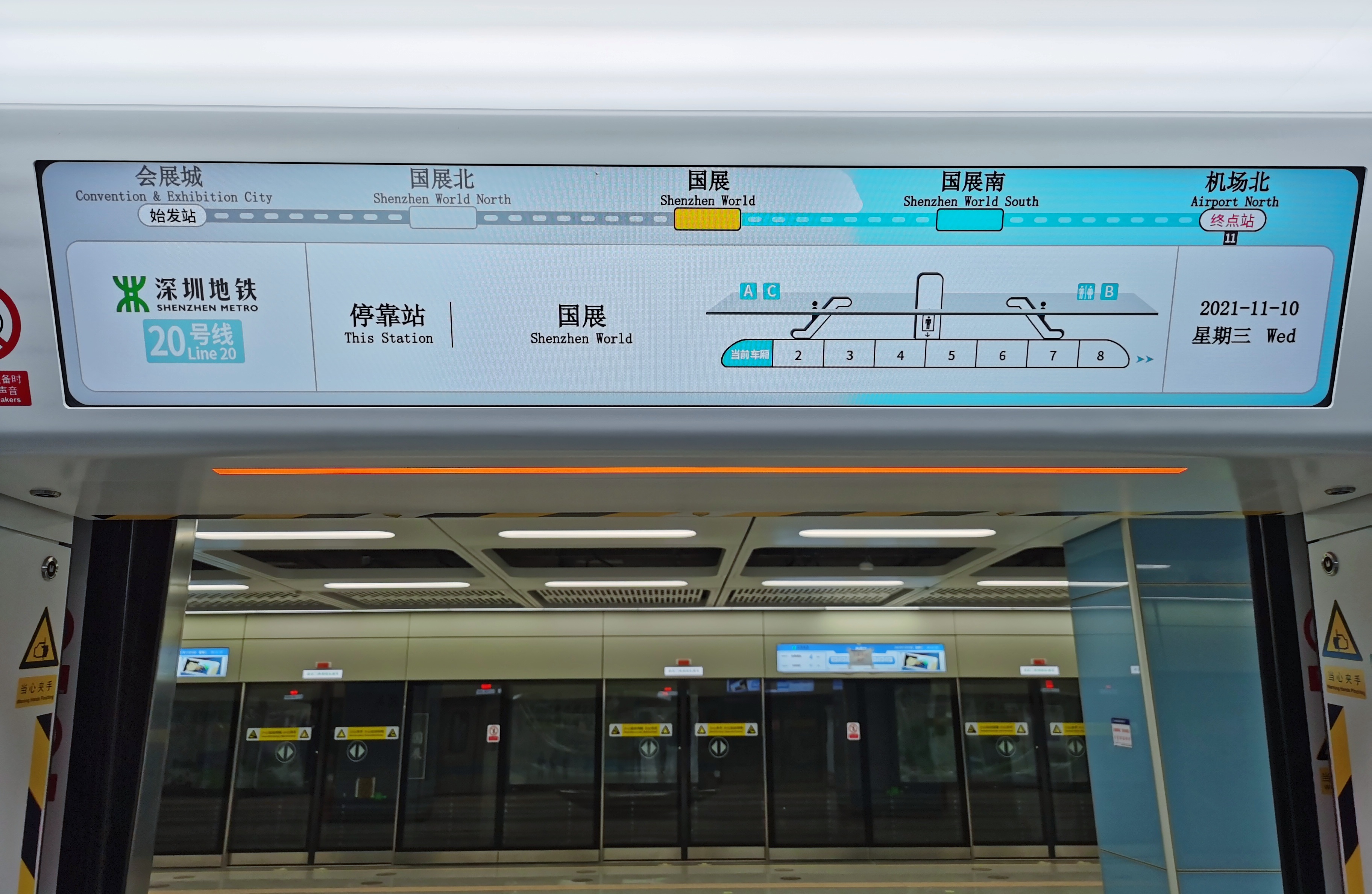City puts first driverless Metro line on trial run
Writer: Han Ximin | Editor: Holly Wang | From: Shenzhen Daily | Updated: 2021-11-11

A scene inside a train during a test run on Shenzhen Metro Line 20, the first automated Metro line in Shenzhen. Courtesy of Shenzhen Metro Group
Phase I of Metro Line 20, which will become Shenzhen’s first fully automated subway line when it is put into service at the end of this year, began test runs Monday, its operator Shenzhen Metro Group said yesterday.
Driverless trains will run on schedule for 20 consecutive days between 7:30 a.m. and 8 p.m. at intervals of 5 minutes and 36 seconds during peak commute hours and 7 minutes during off-peak hours.
Five trains will be deployed for rush hours and four for off-peak hours.
The line has adopted the communication-based train control (CBTC) signaling technology, which helps improve railway transportation efficiency and make it safer, according to Chai Zongwu, a signal engineer from Shenzhen Metro Group.
CBTC ensures the safe rail vehicle operation using data communication between various control points that make up the system.
It uses an off-board computer to monitor all trains operating on tracks, which allows trains to be spaced closer together than on a manually controlled line since information is sent to computers aboard the trains.
Fully automated Metro lines offer numerous advantages over their human-controlled counterparts.
They can reduce required manpower by 30-70 percent, achieve higher frequency, and improve reliability by over 50 percent, according to the Metro company.
They operate automatically at all times, including opening and closing doors, detecting obstacles and handling emergencies.
According to the National Engineering Laboratory for Urban Rail Transit Train Communication and Operation Control, fully automatic operation can realize functionalities including unmanned train driving, automatic entry and exit of parking spaces, automatic train washing and recovery of train failures, as well as adjusting operation status depending on passenger traffic.
This will reduce operation failure by more than 70 percent compared with manually driven trains, and realize 24-hour uninterrupted transportation services.
The 8.36-kilometer Phase I of Metro Line 20 has five stations, connecting Terminal 4 of Shenzhen Bao’an International Airport with Shenzhen World Exhibition & Convention Center in Bao’an District. It is scheduled to begin operation at the end of this year. The line could possibly be extended northward to Dongguan in the future.
The autonomous train technology will be first piloted on Line 20 and expanded to other lines including Lines 12, 13 and 14, when they are put into operation in 2022 and on Line 16, when it is put into operation in July 2023, according to Shenzhen Metro Group.
Due to the sound performance of autonomous train lines in China and abroad, many Chinese cities plan to build new driverless Metro lines.
The International Association of Public Transport announced that fully automated metro lines around the world had reached a combined 1,000-kilometer milestone by April 2018.